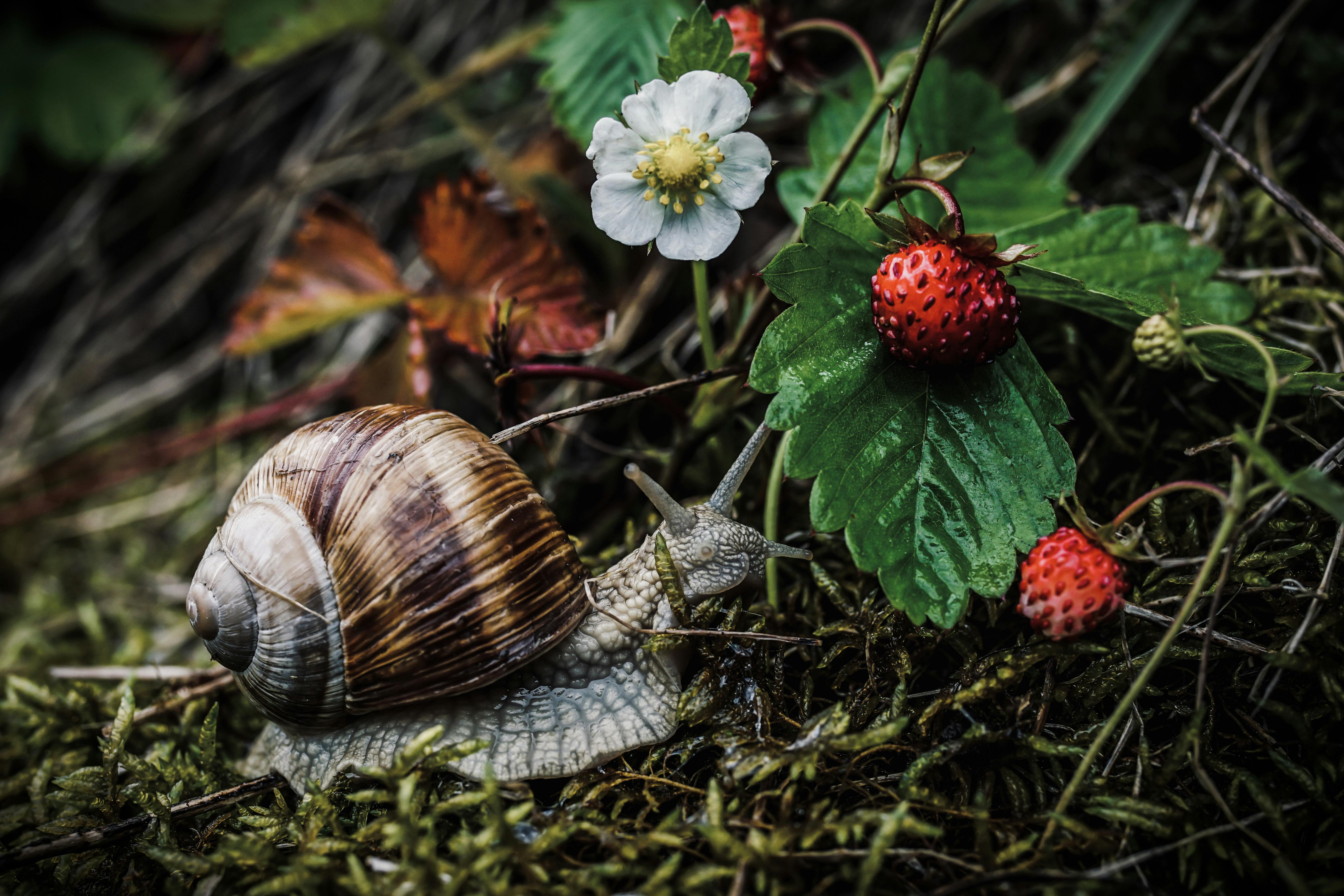Wild strawberries are a common garden weed in many parts of the world. While they can make a tasty snack, they can also take over your garden and prevent other plants from growing. If you want to get rid of wild strawberries, there are several steps you can take to eradicate them from your garden. In this article, we will discuss how to get rid of wild strawberries and prevent them from coming back.Wild strawberries are small, sweet-tasting fruits that are found growing in fields and forests around the world. They are members of the rose family and are related to garden strawberries. Wild strawberries tend to be much smaller than garden varieties and they have a distinctive flavor that is both sweet and tart. The fruits have a deep red color and are covered in tiny yellow seeds. Wild strawberries can be eaten fresh or used in many different recipes.
Identify Wild Strawberries
Wild strawberries are an edible species of small, red fruit that can be found in many parts of the world. They are a popular food source for both humans and animals. To identify wild strawberries, look for their distinctive small, heart-shaped leaves and bright red color. The unique shape of the leaves will help you distinguish it from other plants. The plant also produces white flowers that are easily noticeable in the springtime. When ripe, the berries will be bright red and slightly soft to the touch. The berries usually grow in clusters near the base of the plant and have numerous small seeds on their surface. When harvesting wild strawberries, make sure to use scissors or pruning shears to avoid damaging the plant or the fruits.
Wild strawberries have a sweet flavor that is similar to store-bought strawberry varieties, although they tend to be smaller in size. They can be eaten fresh or cooked into jams, pies, or other desserts. They can also be frozen and used later in recipes for smoothies or baked goods. Wild strawberries are a nutritious snack and contain high levels of antioxidants and vitamins that can benefit your health.
Removing Wild Strawberries By Hand
Removing wild strawberries by hand can be tedious and time consuming, but if you want to get rid of them for good, it’s often the only way. Removing wild strawberries requires patience, determination, and a good pair of gloves.
Begin by examining your garden for wild strawberry plants. They are usually small and have three-lobed leaves with white flowers and small red fruit. If you find any, gently pull them up by the roots using your hands or a hand trowel. Be sure to get as much of the root out as possible to prevent regrowth.
Once all of the plants have been removed from your garden, take a look at any crevices or other areas where strawberry plants may be growing. If you can’t pull them out with your hands, use a hand trowel or gardening fork to dig them out. Again, be sure to remove as much of the root system as possible.
Next, spread organic mulch around the affected area in order to prevent new strawberry plants from growing back. Mulch can help smother existing weeds and keep new ones from sprouting up in their place. Finally, regularly inspect your garden for any new growth and remove it promptly so that more weeds don’t take hold.
Removing wild strawberries by hand is a laborious process but it is often the only way to get rid of them permanently. With patience and determination you can successfully remove wild strawberries from your garden and ensure that they don’t return.
Applying Herbicides to Wild Strawberries
Wild strawberries are a common sight in many gardens and lawns. While they may look attractive, they can quickly spread and become a nuisance. In order to control the spread of wild strawberries, herbicides can be used. Applying herbicides correctly is essential to ensure that the plants are controlled without damaging surrounding vegetation or harming pets and wildlife.
Before applying any herbicide, it is important to identify the species of wild strawberry. Different types of herbicides will be effective on different species, so knowing what type of plant you are dealing with is essential for successful control. Once the species has been identified, select an appropriate herbicide for that species and read the product label carefully to ensure that it is safe for use in your area.
When applying herbicides, make sure to wear protective clothing such as long-sleeved shirts, trousers, gloves and a mask. Apply the herbicide as directed on the product label and avoid getting it on other plants or hard surfaces such as patios or driveways. Herbicides should also not be applied when rain is forecast in the next 24 hours and should not be used near ponds or streams as they can contaminate water supplies.
Herbicides can be an effective way of controlling wild strawberries but it is important to use them responsibly and follow all safety instructions on the product label. If done correctly, this will ensure that wild strawberry populations are kept under control without causing harm to people or wildlife.
Applying Mulch To Cut Off Sunlight
Mulch is a great way to cut off sunlight from your garden and keep it from damaging plants. Mulch can be applied in a variety of ways, from spreading it around the base of trees and shrubs to laying it in pathways and beds. It helps to prevent weeds from germinating, retain moisture in the soil, and reduce evaporation. It also helps to control soil temperature, by absorbing heat during the day and releasing it at night. For best results, use an organic mulch like bark or wood chips, as this will provide nutrients to the soil as it breaks down over time. Before applying the mulch, make sure to remove any existing weeds or debris from the area, as these can interfere with its effectiveness. Once you’ve spread the mulch over the desired area, be sure to keep it moist so that it can do its job properly.
Mulching is an easy and effective way to protect your plants from excessive sunlight exposure. Not only will it keep your garden looking neat and tidy, but it will also help you conserve water and keep weeds under control. So go ahead and give your plants some extra protection with a layer of mulch!

Boiling Water To Eradicate Wild Strawberries
Using boiling water to eradicate wild strawberries is a simple and effective method for controlling the spread of these invasive plants. Boiling water can be used to kill the roots, stems, and leaves of wild strawberry plants, as well as any berries that may have already formed. This method can be used both to control established infestations and to prevent new plants from taking root.
To use boiling water for weed control, fill a large pot with water and bring it to a rolling boil. Carefully pour the hot water directly onto the crown of the wild strawberry plant. You may need to pour hot water several times onto a single plant in order to effectively kill it. Be careful not to accidentally splash boiling water onto nearby desirable plants.
This method works best when used in conjunction with other weed control practices such as mulching or hand-pulling of young seedlings. Boiling water is most effective when applied on sunny days when temperatures are above 65 degrees Fahrenheit (18 degrees Celsius). As with any type of weed control, multiple applications may be necessary for complete eradication.
Douse The Area With Vinegar
Vinegar is an inexpensive and natural way to help with many household cleaning needs. It is a great way to disinfect surfaces, remove odors, and even get rid of pests. When it comes to getting rid of mold or mildew, vinegar is an effective and safe solution. To douse the area with vinegar, simply mix equal parts white distilled vinegar and water in a spray bottle. Once the area is saturated, let the vinegar sit for about ten minutes before wiping away any remaining residue. Be sure to wear gloves when handling vinegar as it can be very caustic on the skin. Once you have finished dousing the area with vinegar, make sure it is completely dry before attempting any other cleaning method.
Vinegar can also be used as a preventative measure against mold and mildew growth. Simply spray down any areas that are prone to moisture or humidity with a mixture of vinegar and water before they become damp. This will help keep mold from forming in these areas and will keep your home looking clean and fresh for longer periods of time.
Burn The Area For Complete Removal
Burning an area is an effective way to remove unwanted vegetation and debris. Burning releases carbon dioxide, nitrogen oxide, and other gases into the atmosphere, which can have a negative impact on the local environment. Burning also releases ash and other particulates which can create air pollution. Therefore, it is important to ensure that burning is done in a safe and controlled manner.
When a burn is properly managed, it can be an effective way to remove weeds, pest insects, and other vegetation that can impede the growth of valuable plants such as timber or crop plants. Additionally, burning can reduce the accumulation of organic material on the ground which can prevent water runoff and erosion. Additionally, burning can improve soil fertility due to the release of nutrients from organic matter.
However, burning should only be done when necessary and with caution. The intensity of the fire should be carefully monitored to ensure that it does not spread beyond the intended area or cause damage to nearby structures or ecosystems. Additionally, proper safety precautions must be taken such as having an adequate water source nearby in case of emergencies. It is also important to check with local authorities before starting a fire as some areas may have regulations in place regarding outdoor burning.
Overall, burning an area for complete removal can be an effective tool when used properly but caution must be taken to ensure safety and minimize environmental impacts.

Conclusion
Wild strawberries are a nuisance to many gardeners, but fortunately they can be removed without the use of harsh chemicals. The key is to prevent the spread of wild strawberry plants by removing runners, flowers, and fruits as soon as they appear. Hand-pulling is an effective way to get rid of wild strawberries, but it does involve some hard work and persistence. Alternately, you can smother them with mulch or plastic or use a herbicide such as glyphosate. Whichever method you choose, it’s important to keep up with regular maintenance to ensure that the wild strawberries don’t return. With these strategies in place, you should be able to quickly identify and eliminate any wild strawberry plants in your garden.
In summary, getting rid of wild strawberries requires consistent effort and attention but it is possible with various methods including hand-pulling, mulching, covering with plastic sheets, and using herbicides. With patience and persistence you can reclaim your garden from these pesky weeds!



